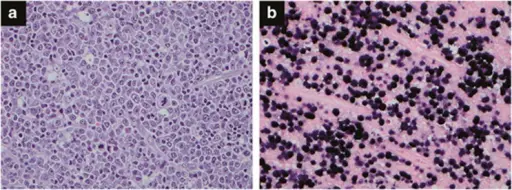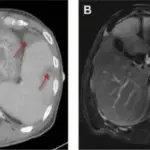Mononucleosis is a benign, self-limiting lymphoproliferative ailment caused by the Epstein-Barr virus (EBV), one of the herpesviruses. Also known as glandular fever. Contagion may occur from childhood to old age but the orthodox acute infection is more in adolescents and young adults. Conveyed by person-to-person contact such as by kissing.
What is the Pathology of Mononucleosis?
The pathology of mononucleosis is:
-Etiology: The cause of mononucleosis is the Epstein-Barr virus (EBV) also known as human herpesvirus 4, a widely disseminated double-stranded DNA herpes virus. Spread of Mononucleosis is by contact, typically salivary secretions.
-Genes involved: EBERs (LMP2A), EBNA1 and LMPs
-Pathogenesis: The sequence of events that lead to mononucleosis is Epstein-Barr virus is introduced into the oropharynx, begins the replication process. The predilection for infection of the B-cells of lymphoid tissue. The infection spreads over the lymphatic system. The body develops antibodies against the virus. In a higher percent, heterophile antibodies are produced in response to the infection.
-Histology: The histology related to mononucleosis shows the presence of lymphocytosis and increased circulating atypical lymphocytes which affirm the diagnosis of Epstein-Barr virus infection.
How does Mononucleosis Present?
Patients with mononucleosis typically, Epstein-Barr virus is widely dispersed in all population groups. However, the indicative infection is in adolescents of both genders. Present at an age range of 15 to 24-years. The symptoms, features, and clinical findings associated with mononucleosis include: The classical triad, fever, lymphadenopathy, pharyngitis, Other complaints are, tonsillar enlargement rash, and/or periorbital edema relative bradycardia, splenic tenderness.
How is Mononucleosis Diagnosed?
Mononucleosis is diagnosed through, imaging, CT scan, and/or MRI to rule out other causes of encephalitis. Laboratory studies such as liver function tests, heterophile antibody tests, or Epstein-Barr virus-specific antibodies to affirm the presence of the disease may be done as well.
How is Mononucleosis Treated?
Mononucleosis is treated by medical care, which monitors patients with thrilling tonsillar enlargement for airway obstruction. Steroids for imminent or established airway obstruction. Surgery in case spontaneous splenic rupture, rare patients with Epstein-Barr virus infection. Refrain from active physical activity for a month.
What is the Prognosis of Mononucleosis?
The prognosis of (mononucleosis) is good. The majority of patients with Epstein-Barr virus infection recuperate without sequelae and develop enduring immunity to monitoring the dormant virus. The acute phase of the disease resolves by end of week two, but malaise indications may persevere for months. In rare situations, malignancies have been related to the infection.



